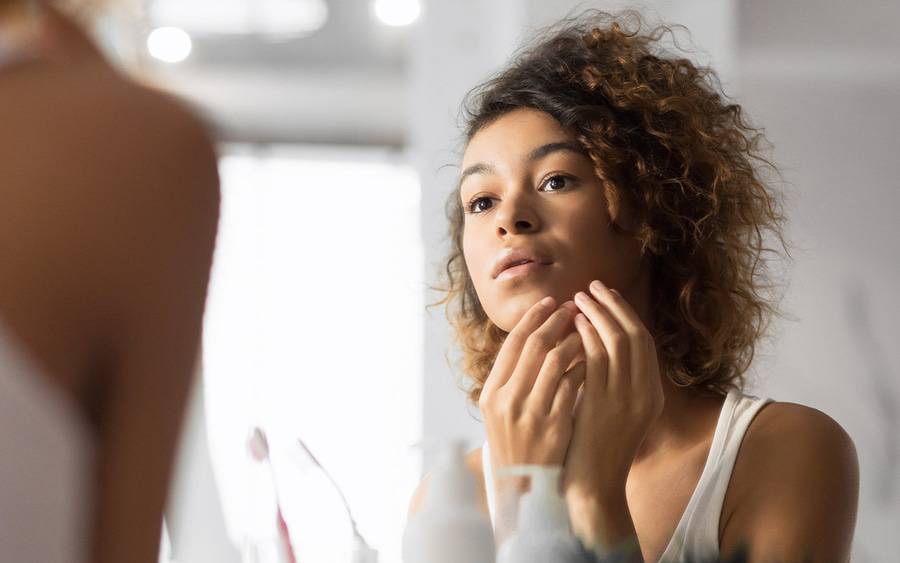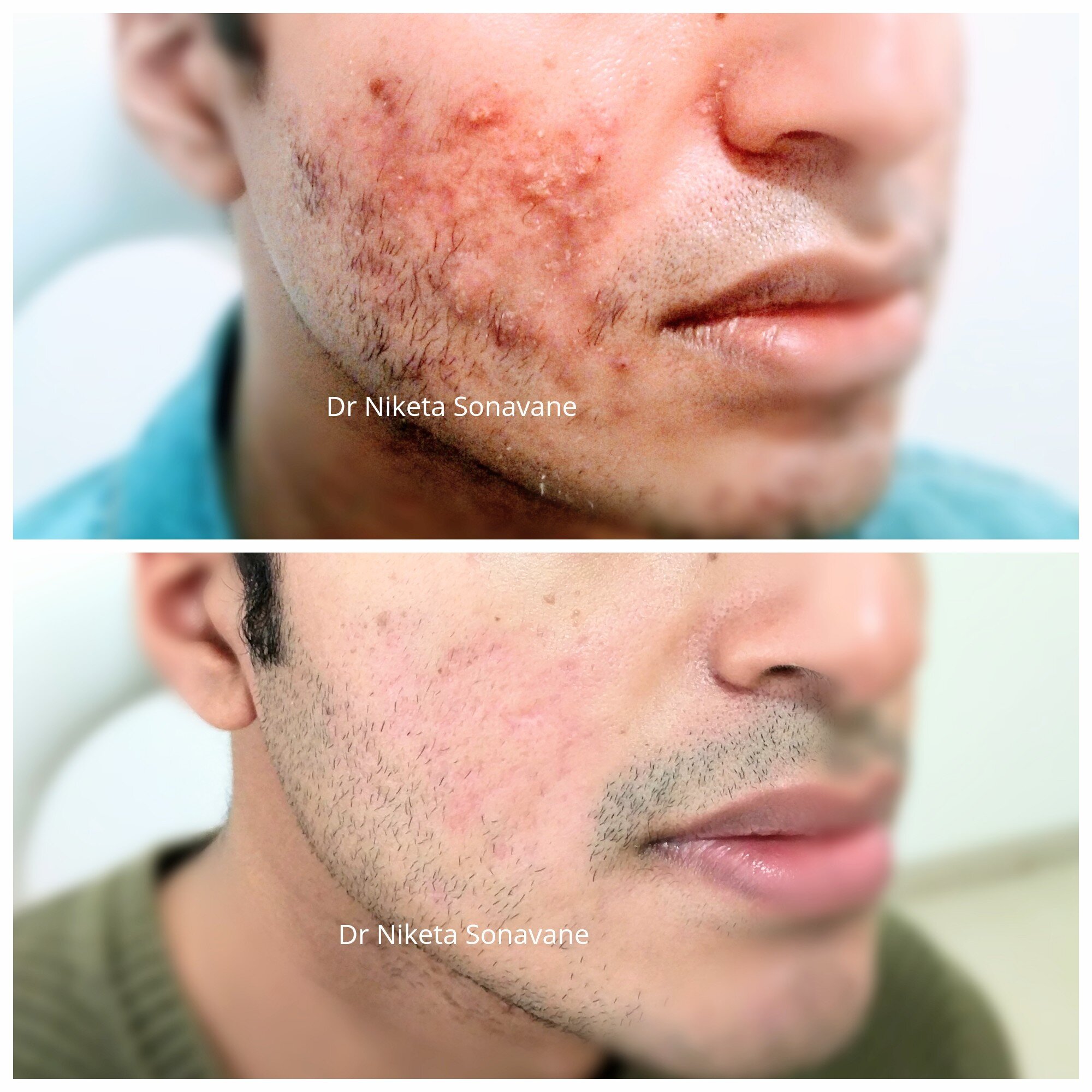Skin Rejuvenation Treatments: The Ultimate Overview to Refreshing Your Skin
Skin Rejuvenation Treatments: The Ultimate Overview to Refreshing Your Skin
Blog Article
Recognizing the Numerous Skin Problems and Efficient Treatment Options for Acne Scars
Acne marks stand for a complicated interaction of skin problems that dramatically impact people' self-esteem and general skin wellness. As we check out the landscape of acne mark management, it ends up being obvious that the journey toward more clear skin may involve more than just topical services.
Types of Acne Scars

In contrast, hypertrophic marks result from an overflow of collagen during the healing procedure, bring about raised locations on the skin. These scars are often solid and can vary in color, sometimes appearing red or darker than the bordering skin.
Comprehending these types of acne scars is crucial for developing an efficient treatment strategy - acne treatment for sensitive skin. Options might include chemical peels, laser treatment, microneedling, or dermal fillers, tailored to the details mark type. A detailed appointment with a skin doctor can aid establish one of the most suitable treatment, thinking about the person's skin type, mark extent, and overall skin health
Root Causes Of Acne Scarring
Scarring happens as a result of the body's all-natural healing action to inflammation and injury triggered by acne lesions. When acne kinds, it sets off an inflammatory feedback, resulting in the launch of different cytokines and growth factors that advertise healing. This process can sometimes lead to too much cells formation or poor repair work, resulting in scars.
The primary root causes of acne scarring consist of the intensity of the acne itself, period of the sores, and individual skin types. Severe inflammatory acne, such as cysts and nodules, is more probable to lead to scarring because of deeper cells damage. In addition, improper handling of acne sores, such as squeezing or choosing, can aggravate cells injury and swelling, raising the chance of scarring.
Genetic predisposition also plays a substantial function; individuals with a family history of scarring go to a greater risk. Additionally, skin type and color can influence mark development, as darker skin tones might experience post-inflammatory hyperpigmentation, while lighter skin might develop atrophic marks.
Inevitably, recognizing these reasons is crucial in taking care of acne and mitigating the potential for scarring.

Therapy Alternatives for Scarring
Reliable therapy options for acne scarring vary relying on the kind and intensity of the scars. Usually classified right into atrophic, hypertrophic, and keloid marks, these problems require tailored strategies for optimal outcomes.
For atrophic marks, which are defined by a loss of tissue, treatments such as chemical peels, microdermabrasion, and laser therapy are commonly used. These approaches advertise skin renewal and promote collagen production, thus enhancing skin structure. Subcision, a minimally intrusive treatment, can additionally be efficient by breaking up fibrous bands underneath the skin.
Keloid and hypertrophic scars can be extra challenging to treat. Alternatives consist of corticosteroid injections to minimize swelling and flatten the scars. Sometimes, cryotherapy or laser treatment may be recommended to minimize their appearance.
Surgical options are available for extreme scarring, where excision or skin grafting might be essential. It's crucial for people to talk to a skin doctor to assess their certain scar kind and go over one of the most ideal therapy plan. Incorporating numerous therapies typically yields the most effective results, making sure that each client's one-of-a-kind skin problem is attended to successfully.
Natural Home Remedy and All-natural Solutions
Natural options and natural home remedy can provide an obtainable technique for individuals seeking to boost the look of acne marks (acne scars). Numerous ingredients found in the home kitchen area have actually demonstrated potential advantages in boosting skin appearance and advertising healing

An additional efficient choice is lemon juice, which acts as an all-natural exfoliant and can lighten hyperpigmentation. Nevertheless, it should be used meticulously, as it may trigger photosensitivity. Oatmeal masks are additionally advantageous; their mild exfoliation can help remove dead skin cells while calming inflammation.
Crucial oils, such as tea tree oil and lavender oil, can even more sustain scar recovery due to their antimicrobial residential properties. It is critical to carry out a spot examination before applying any solution to ensure there are no adverse responses. These natural services can be a complementary method in the journey to look at this site decrease acne marks.
Stopping Future Scarring
Embracing an aggressive strategy to skincare can substantially decrease the danger of creating future acne marks. One of the vital approaches is to handle acne properly as it occurs. This entails using non-comedogenic skin care items useful source and drugs prescribed by dermatologists that target acne without irritating the skin. Regular cleaning, exfoliation, and hydration can assist maintain skin health and prevent clogged up pores.
In addition, avoiding the lure to squeeze or select acne sores is important, as this can result in inflammation and subsequent scarring. Rather, people ought to focus on applying topical therapies that promote recovery and reduce swelling. Components such as salicylic acid, benzoyl peroxide, and retinoids are known for their efficiency in handling acne and minimizing scars.
Sun security is another important part; direct exposure to UV rays can restrain and dim marks healing. Using a broad-spectrum sunscreen daily can mitigate these impacts.
Last but not least, maintaining a healthy and balanced diet rich in anti-oxidants and staying hydrated supports skin regrowth. By executing these safety nets, individuals can dramatically reduce their threat of future scarring and advertise overall skin health and wellness.
Verdict
In verdict, an extensive understanding of acne scars, incorporating both atrophic and hypertrophic types, is essential for effective treatment techniques. Customized interventions, including professional therapies and natural remedy, can substantially enhance skin appearance and texture. Precautionary measures also play an important function in minimizing future scarring. Consultation with a dermatologist continues to be critical to devise tailored approaches that think about individual skin types and mark intensity, ultimately enhancing the efficacy of mark administration strategies.
Acne this hyperlink marks represent a complicated interplay of skin conditions that significantly influence individuals' self-esteem and general skin wellness. The 2 key classifications of acne marks are hypertrophic and atrophic marks. These scars are further identified right into 3 subtypes: ice choice marks, which are deep and narrow; boxcar marks, which are broader and have distinct sides; and rolling scars, which develop a wave-like look due to irregular skin structure.
A detailed examination with a skin specialist can help identify the most proper intervention, taking right into account the individual's skin kind, mark extent, and general skin wellness.
Consultation with a dermatologist remains necessary to create individualized methods that think about private skin kinds and scar extent, eventually enhancing the effectiveness of scar administration techniques.
Report this page